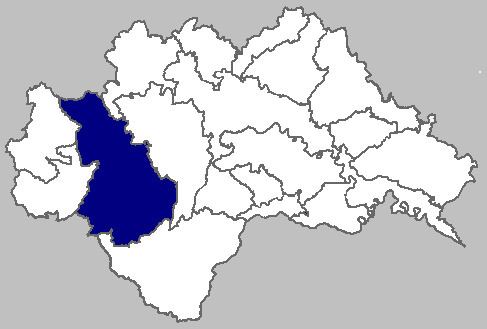Time zone CET (UTC+1) Population 9,283 (2011) | Website www.grad-glina.hr Local time Tuesday 11:20 PM | |
 | ||
Weather 6°C, Wind N at 3 km/h, 74% Humidity | ||
Glina is a small town in central Croatia, located southwest of Petrinja and Sisak in the Sisak-Moslavina County. It lies on the eponymous river of Glina.
Contents
Map of 44400, Glina, Croatia
History
Glina was first mentioned as a city in June 1284. Later in September 1737, during the threat of the Turks, the Croatian Sabor met in Glina. It was also a post of Ban Jelačić when he became the commander the Military Frontier during the Turkish threat.
During the mid-18th century, Count Ivan Drašković created Freemason lodges in several Croatian cities and towns, including Glina, where officers and other members shared ideas of the Jacobins from the French Revolution, until Emperor Francis II banned them in 1798. In the late 19th and early 20th century, Glina was a district capital in the Zagreb County of the Kingdom of Croatia-Slavonia.
During World War II, Glina was part of the Independent State of Croatia established by the Axis powers as a result of the Invasion of Yugoslavia. There were two Ustaše massacres of Serbs in 1941. On 11–12 May 1941, between 260–300 Serbs died, and on 3 August 1941, as many as 2,000 Serbs were killed, most in the town's Serbian Orthodox Church (see Glina massacre). During the Croatian War of Independence (1991–95), Glina was a town in the unrecognised Republic of Serbian Krajina. On 6 August 1995, Glina became a fully functioning part of Croatia itself after Operation Storm. At the same time, most ethnic Serbs fled. In December 2015, authorities exhumed 56 bodies of Serbs from a mass grave in the Gornje Seliste municipality. They were killed during the Croatian Army's Operation Storm in August 1995. The grave, dug immediately afterward, contained the bodies of Serb civilians and soldiers who died during the military offensive.
Demographics
The results are for the whole municipality of Glina which was larger during previous censuses. In some censuses, people listed themselves as Yugoslavs (not Serbs or Croats).
Settlements
The settlements part of the administrative area of Glina, total population 9,283 (census 2011), include:
